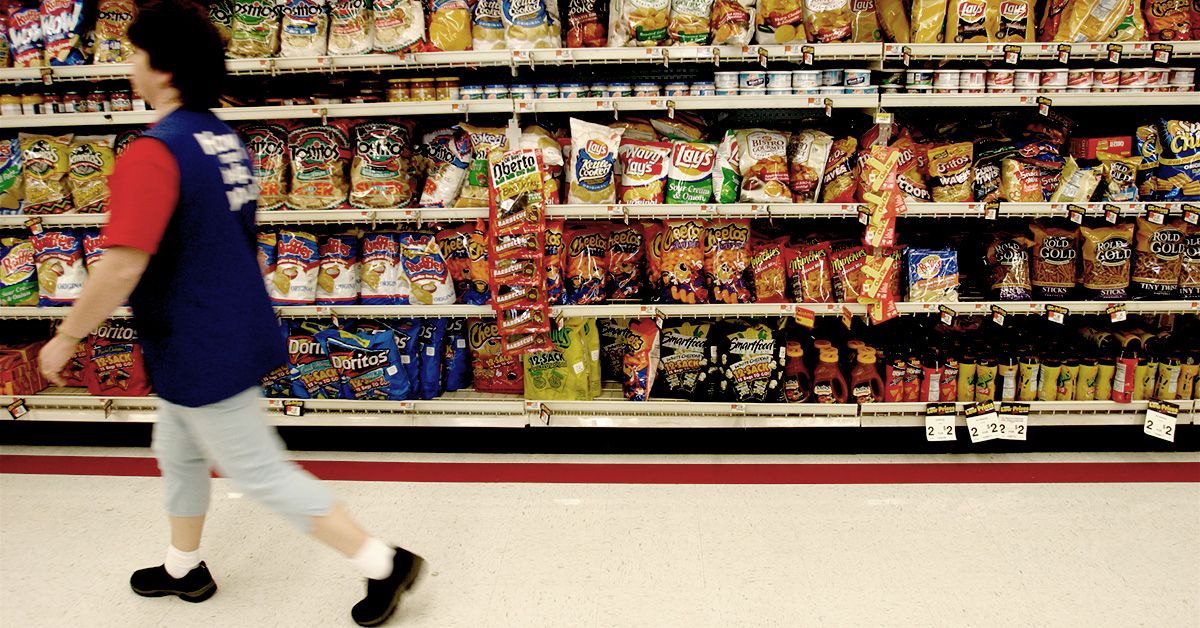- A growing body of research has suggested that the consumption of ultra-processed foods (UPF) has severe consequences for health.
- However, some researchers are now suggesting that many of the studies on UPFs and their adverse effects on health are not accounting for the differences in processing and ingredients of certain subgroups.
- Experts say that avoiding certain UPFs like deli meats, hot dogs, sugary drinks, and salty snacks are of greater importance than attempting to avoid anything processed at all.
Essentially, the paper suggests, many of the studies on UPFs and their adverse effects on health are not accounting for the differences in processing and ingredients of certain subgroups. By lumping them all together, these approaches tend to paint all UPFs with the same brush.
“Different groups of UPF evaluated within the same epidemiological study often show markedly different associations with the incidence of the health endpoints,” the authors wrote.
“Statistical analyses are based on numerous assumptions such as the food intake is measured accurately and precisely, that food composition is known quantitatively, the methods of food storage, preparation and cooking have no effect on the values, etc. Those assumptions are potentially questionable, and so are the corresponding results,” they suggested.
Melanie Murphy Richter, MS, RDN, a registered dietitian nutritionist and the director of communications for the nutrition company Prolon, who was not involved in the paper, told Medical News Today that almost all foods are processed in some form, but there are distinctions that consumers need to keep in mind.
“Whether it’s cooking, freezing, or fortifying with nutrients, the term ‘processed’ itself can be misleading when discussing health. It’s not necessarily the processing that’s harmful — it’s what happens during that process. For example, making yogurt involves processing, but that doesn’t make it unhealthy. This paper underscores that not all ultra-processed foods (UPFs) are created equal, and grouping them together as universally detrimental is overly simplistic. I agree with this.”
– Melanie Murphy Richter, MS, RDN
“Some UPFs can have neutral or even beneficial health effects, while others are linked to increased risk of chronic diseases. This tells me that UPFs are often unfairly lumped together, which can distort our understanding of their health impact,” Richter told us.
”The issue isn’t so much that they are ‘processed,’ but rather how they are processed, the type of ingredients used, and how they fit into an overall dietary pattern,” she explained. ”This differentiation is important to acknowledge before making any broad dietary recommendations or public health policies.”
MNT also spoke with Mir Ali, MD, board certified bariatric surgeon and medical director of MemorialCare Surgical Weight Loss Center at Orange Coast Medical Center in Fountain Valley, CA, who was not involved in the paper.
He agreed that UPFs are a broad category and their direct effects on health can be difficult to assess. “Often foods that are minimally processed get lumped into the same category as foods that have many additives,” Ali said.
“In general, the more additives for flavor or preservation the foods have, the more processed they are. So, for example, sweetened breakfast cereal is worse than plain bran cereal, which is not as good as plain oats. By contrast, the less additives the better. As an example, drip coffee is better than store bought cold brew, which is better than a frozen blended coffee drink,” he explained.
The NOVA system, which classifies foods according to the degree and type of processing used in their preparation, qualifies ultra-processed foods as industrial creations shaped mostly from substances, including oils, fats, sugars, and proteins derived from natural foods, along with modified starch and hydrogenated fats, with added coloring, and flavor enhancers.
They include relatively inexpensive ready-to-eat meat, poultry, and seafood products, sugary drinks like sodas, dairy-based desserts, and processed breakfast cereals or other foods.
Richter told MNT that the worse culprits are sugary beverages like sodas and energy drinks, overly salty snacks like chips, crackers, and instant noodles, and other UPFs with trans fats and hydrogenated oils all should ideally be avoided. Ultimately, it is best practice to read the ingredient list on food products before buying them.
Sugary beverages can lead to insulin surges and spikes in blood sugar, which can lead to type 2 diabetes. They also can encourage overconsumption and weight gain, which can store fat in the liver and lead to non-alcoholic fatty liver disease.
The snacks with hydrogenated oils and trans fats are “notorious for increasing ‘bad’ LDL cholesterol and decreasing ‘good’ HDL cholesterol,” Richter said. She also added that:
“This imbalance can lead to arterial plaque buildup, promoting atherosclerosis and increasing the risk of heart attacks and strokes. Trans fats also contribute to inflammation and have been linked to insulin resistance and other metabolic disturbances.”
– Melanie Murphy Richter, MS, RDN
Processed meats carry their own set of health risks, Richter also noted. She emphasized their classification as Group 1 carcinogens by the World Health Organization (WHO): “Hot dogs, sausages, and deli meats are preserved using nitrates and nitrites, which can form carcinogenic compounds like nitrosamines during cooking or metabolism.”
“Additionally, these meats often contain high levels of sodium and saturated fats, contributing to hypertension and cardiovascular disease. The pro-inflammatory nature of these foods can further exacerbate health risks,” she pointed out.
The paper’s authors stress that not all UPFs are the same, given the ingredients involved in different subgroups.
“The available evidence regarding how different UPF were associated with health and the results of studies investigating specific food additives question the possibility that ultraprocessing per se is the real culprit,” the authors wrote.
“Possibly, other unaccounted-for confounding factors play major roles. Consequently, the recommendation of limiting or avoiding foods carrying an unspecific ‘ultra-processed food’ label based on the NOVA classification currently has poor scientific grounds and should be regarded as scientifically weak and in need of experimental confirmation,” they suggested.
One aspect of UPFs that make them appealing to consumers is their price point relative to many natural or organic products. But, as Richter says, there are nuances within the overall UPF label, as subgroups like whole-grain bread and pastas, canned/frozen fruits and vegetables, and many dairy products do have health benefits.
“Fortified cereals, for instance, have been instrumental in reducing the incidence of neural tube defects in infants due to the added folic acid mothers receive when pregnant. Whole grain breads and cereals retain most of their fiber and nutrients, providing a convenient source of complex carbohydrates, vitamins, and minerals,” Richter said.
“Yogurt is technically an ultra-processed food, but it can offer health benefits when low in added sugars. Yogurt fortified with probiotics supports gut health, while calcium and vitamin D contribute to bone health. Choosing unsweetened or minimally sweetened options allows one to enjoy these benefits without the drawbacks associated with excessive added sugars.”
– Melanie Murphy Richter, MS, RDN
There is a balance that can ultimately be struck between minimally processed foods and basic grocery items like fresh fruits and vegetables, Ali told us.
Given the economic choices many families face, that can be a difficult balance to strike, but maintaining a routine that involves home-cooked meals should be a goal.
“The more people buy basic ingredients and cook at home, the less they will be consuming ultra-processed foods. Unfortunately, for many people this is very difficult to do,” he said.
“While affordability and convenience matter, making a conscious effort to prioritize minimally processed foods is a good rule of thumb. This means choosing UPFs that are closer to their natural state, offer nutritional benefits, and don’t contain harmful additives,” Richter also noted.
“By combining these choices with fresh foods whenever possible, it’s possible to maintain a diet that’s both healthy and realistic given financial and accessibility limitations,” she advised.


